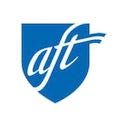
Our neighborhood schools do more than teach
By Julie Sellers
Teachers across this country were given hours, maybe days, to figure out how to teach their students without being in the same place. We’re concerned about the kids we’re accustomed to seeing daily in our schools and classrooms, trying to figure out the best ways to provide online instruction, and we’re worried about what’s happening with some of our students now that they can’t come to school.
My name is Julie Sellers. I am the president of the Cincinnati Federation of Teachers. Since I started teaching 30 years ago, schools have become more than just places where kids learn reading, writing and math. In some of the high-poverty neighborhoods where many of our students live, schools are where children get their meals, or wash and dry their clothes, or get clean clothes when they don’t have any. Some students get mental health counseling and health services at school. I don’t know how those kids are getting the services they need now, but I do know it’s why we’ve fought so hard for investments in public education that really take care of the whole child: because often, school is all they have. It’s the center of our community in many ways.
Another big concern for educators is our homeless students. On any given day, we have at least 3,000 students who are homeless. What’s happening to those students, and where are they finding shelter?
What’s going to happen to students who deal with domestic abuse and are now with their abusers all the time without a few hours of respite at school? What’s happening with our students whose parents are addicted to opioids?
I’m entering my 12th year as president of CFT, and I think the last two weeks have been among the hardest I’ve ever faced. I don’t know if I’ve ever seen this level of panic. When people are panicking, the best solution is to get information, share information and get busy helping people.
So now, every Monday, Wednesday and Friday, I’m working with a small group of CFT members (we’re limited to just four people at a time) to work at one of the district’s school distribution sites to hand out supplies to students, families and our neighbors who need help. The district has turned several schools into meal drop-off sites where families can bring children for breakfast and lunch foods. We typically see about 50–70 families at the distribution site on each of the days we serve.
Businesses, civic organizations and labor unions around the city that “adopt” sites send volunteers to work alongside (at a safe distance) school employees to give out supplies. Of course, we are following CDC guidelines to make sure everyone stays healthy. In addition to practicing social distancing, all volunteers are required to check their temperatures before going to the distribution sites. We also wear gloves and use loads of hand sanitizer.
Our CFT volunteers have been handing out packages with hygiene products, toys and snacks. Already, our union has purchased 425 books for different age- and grade-level children, and we just secured a First Book grant that will enable us to give away even more free books.
The thing that gives me hope in all of this chaos is how members of our community are coming together to help each other.
We are receiving donated supplies and snacks for kids. Businesses are donating broadband access to help kids in high-poverty neighborhoods. Procter & Gamble donated shampoo and other hygiene products. General Electric and Staples are printing homework packets. Homework packets are being distributed to about 30 churches where families pick them up to help kids keep up with schoolwork.
Most of us have never lived through a crisis quite like this one, and the road ahead is uncertain. But I know that, together, we will get through this.

Julie Sellers is the president of the Cincinnati Federation of Teachers.

